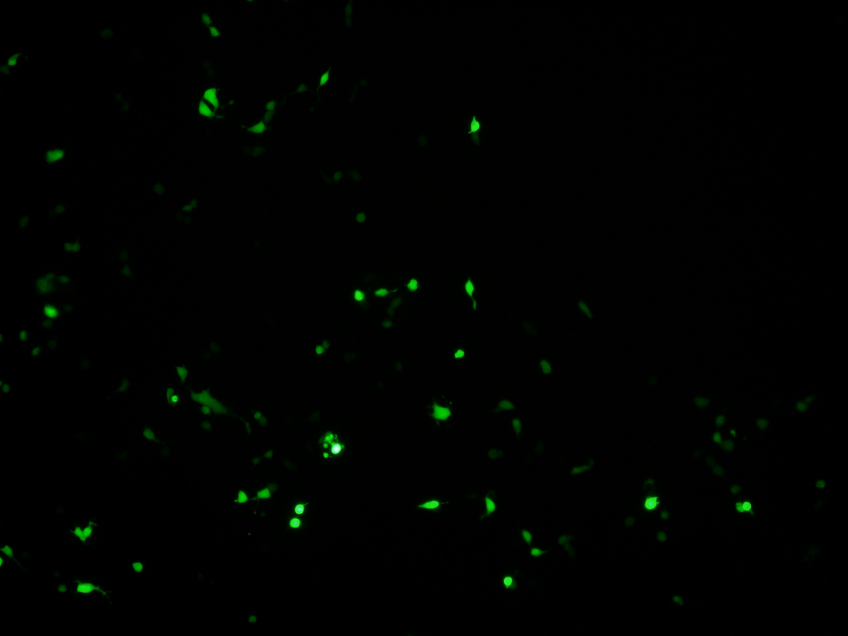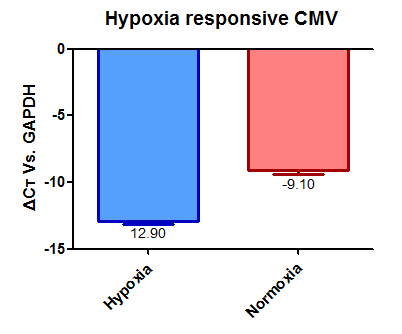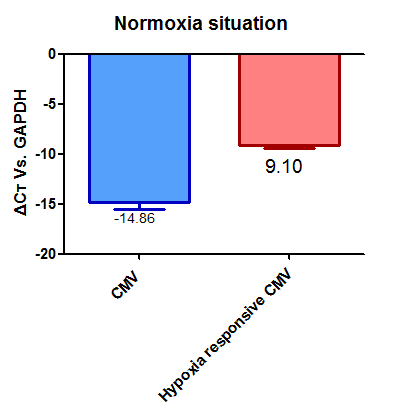Difference between revisions of "Part:BBa K1720002"
(→Experiment:) |
(→Experiment:) |
||
| Line 102: | Line 102: | ||
<b>Result:</b> | <b>Result:</b> | ||
| − | [[File:SCUT2015 China CMV transfection.png|400px|thumb|left|Fig.2 EGFP signal under the control of CMV promotor]] | + | [[File:SCUT2015 China CMV transfection.png|400px|thumb|left|Fig.2 EGFP signal under the control of orginal CMV promotor in normoxia situation]] |
| Line 132: | Line 132: | ||
| − | [[File:SCUT2015 China HRE transfection2.png|400px|thumb|left|Fig.3 EGFP signal under the regulate of | + | [[File:SCUT2015 China HRE transfection2.png|400px|thumb|left|Fig.3 EGFP signal under the regulate of hypoxia responsive CMV in normoxia situation ]] |
| Line 162: | Line 162: | ||
| − | [[File:SCUT2015 China HRE-1 transfection.png|400px|thumb|left|Fig.4 EGFP signal under the regulate of | + | [[File:SCUT2015 China HRE-1 transfection.png|400px|thumb|left|Fig.4 EGFP signal under the regulate of hypoxia responsive CMV in hypoxia situation]] |
Revision as of 03:33, 19 September 2015
Hypoxia-induced promotor
This part is a hypoxia response promotor.We used part BBa_K747096 as a backbone and inserted a hypoxia responsive element to the CMV promotor, so that the CMV promotor will work only under hypoxia situation. When the cells suffer from hypoxia situation this element will begin to work.It will activate the downstream gene expression.The hypoxia response element is a minimal cis-regulatory element mediating transactivation by the hypoxia-inducible factor (HIF) in mammalian cells.
This element with a GFP reporter was then transfected into HEK293 cells .The cells were either cultured under normoxia situation or treated with sodium hyposulfite, an oxygen cleaner to cause hypoxia situation, for 2 hours. As a control, HEK293 cells were also transiently transfected with carrying the original CMV promoter, submitted by the team Freiburg in 2012, followed by the EGFP reporter.
Usage and Biology
Sequence and Features
- 10INCOMPATIBLE WITH RFC[10]Illegal SpeI site found at 41
- 12INCOMPATIBLE WITH RFC[12]Illegal SpeI site found at 41
- 21COMPATIBLE WITH RFC[21]
- 23INCOMPATIBLE WITH RFC[23]Illegal SpeI site found at 41
- 25INCOMPATIBLE WITH RFC[25]Illegal SpeI site found at 41
- 1000COMPATIBLE WITH RFC[1000]
Before we start the experiment, we add our part to psb1c3 vector and packaged the vector with lipo2000.
Vector Map:
Experiment:
We transiently transfected HEK293 cells with plasmids containing hypoxia-induced promotor and EGFP reporter. The cells were treated with sodium hyposulfite, an oxygen cleaner to cause hypoxia situation.If green fluorescence signal was only observed in experimental group and positive control, our Hypoxia-induced promotor’s function will be demonstrated.
Protocol:
1. Seed cells to be 40% confluent at a 35mm culture dish.
2. Dilute 2.5ul Lipofectamine2000 Reagent in 50ul Opti-MEM Medium
3. Dilute 2.5ul (400ng/ul) plasmids in 50ul Opti-MEM Medium
4. Mix diluted Lipofectamine2000 Reagent with diluted plasmids, incubating for 5 min.
5. Withdraw culture medium from 35mm culture dish.
6. Add 1ml Opti-MEM Medium and plasmid-Lipo complex to cells
7. Incubate for 15 hours.
8. Withdraw medium from culture dish.
9. Add 2ml DMEM medium( containing 10% FBS )to cells and incubate for 10 hours
10. Withdraw culture medium from 35mm culture dish.
11. Add 20ul sodium hyposulfite(100umol/L ) to cells
12. Incubate for 1 hour.
13. Observe the cells under Inverted fluorescence microscope.
Result:
Under normoxia condition, we observed weaker green fluorescence under the control of HRE, the hypoxia responsive promotor, than that under the control of the original CMV promoter. Moreover, under the control of HRE, more cells exhibited green fluorescence under hypoxia condition than under normoxia condition. The results suggested that our HRE is working.
The overall florescent intensity under the control of HRE, however, were similar between hypoxia and normoxia conditions. After discussion, we thought there may be several issues in the model, i.e. slower growth of cells or weaker activity of EGFP under the hypoxia condition. Thus, we also measured expression of EGFP by real-time PCR. That data further proved that the HRE device worked as we expected, although not as strict. We believe we can improve this promotor and make it more sensitive in our future work.






